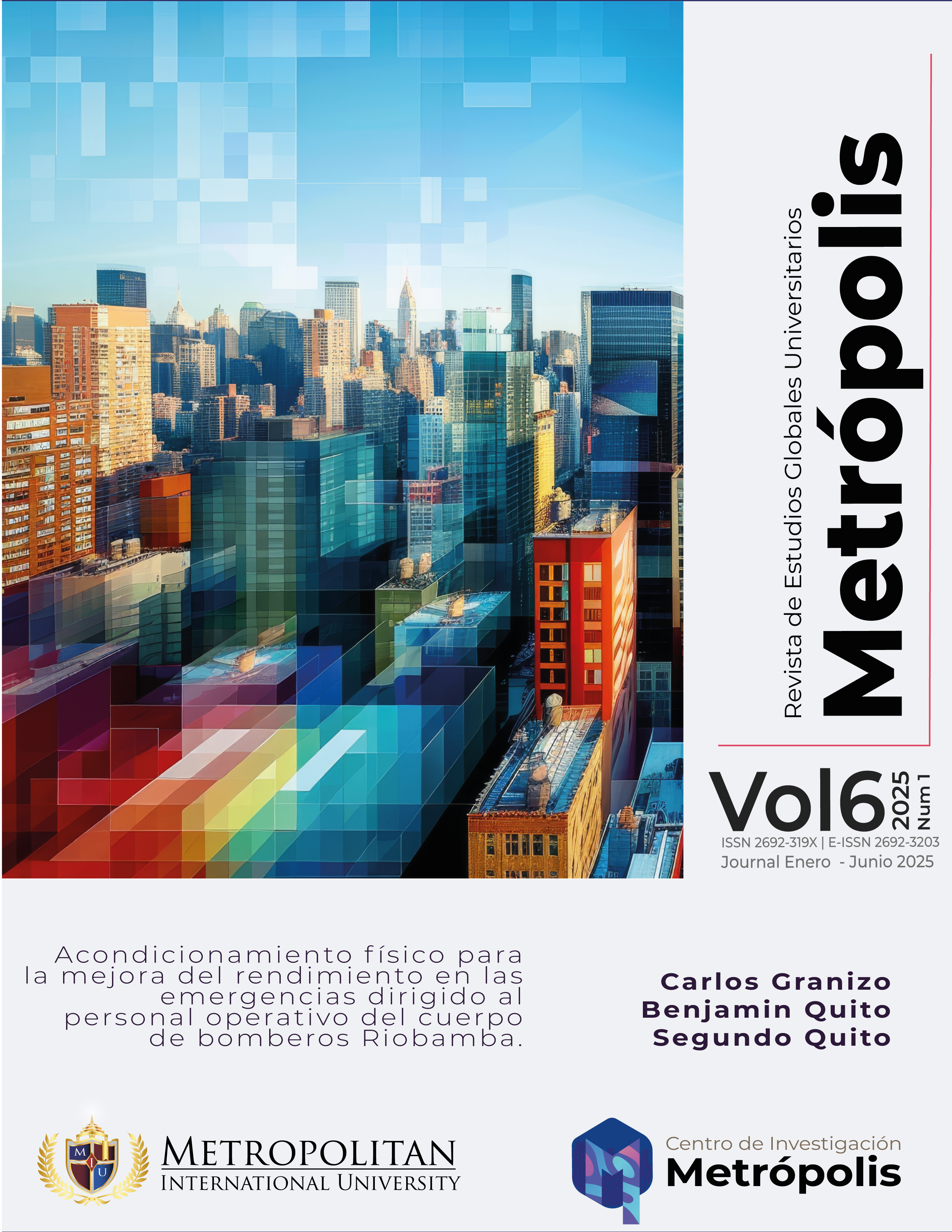Acondicionamiento físico para la mejora del rendimiento en las emergencias dirigido al personal operativo del cuerpo de bomberos Riobamba.
Palabras clave:
Acondicionamiento físico, Rendimiento bomberil, normativas internacionales, entrenamiento especializado, seguridad operativaResumen
El presente estudio examina la importancia del acondicionamiento físico en bomberos y su impacto en la seguridad y eficiencia operativa, en este sentido, se analiza la relación entre la preparación física y la capacidad de respuesta ante emergencias, destacando la necesidad de implementar programas de entrenamiento estructurados que optimicen la resistencia y la fuerza del personal operativo. Desde una perspectiva metodológica, se desarrolla una revisión bibliográfica basada en fuentes científicas recientes, en consecuencia, se identifican estudios que enfatizan la influencia de la nutrición, la regulación hormonal y la recuperación muscular en el desempeño bomberil, lo que permite establecer una base sólida para la formulación de estrategias de entrenamiento adaptadas a las exigencias de la profesión. A su vez, se abordan las normativas internacionales que regulan la preparación física en cuerpos de bomberos, en este contexto, organismos como la NFPA y la OIT han establecido lineamientos que garantizan un nivel óptimo de acondicionamiento físico, minimizando riesgos operativos y mejorando la capacidad de respuesta en situaciones de alta demanda. La metodología del presente estudio es cualitativa y descriptiva bibliográfica, fundamentada en el análisis de estudios recientes, permitiendo identificar tendencias, enfoques teóricos y evidencia empírica relevante sobre el acondicionamiento. Por consiguiente, los hallazgos destacan la necesidad de promover una cultura organizacional que valore la preparación física como un factor esencial en la seguridad ocupacional, en consecuencia, la integración de tecnologías de monitoreo biomédico, estrategias de recuperación activa y entrenamientos especializados se presenta como una solución viable para mejorar el rendimiento del personal bomberil.

##submission.downloads##
Publicado
Cómo citar
Número
Sección
Licencia

Esta obra está bajo una licencia internacional Creative Commons Atribución-NoComercial-CompartirIgual 4.0.





